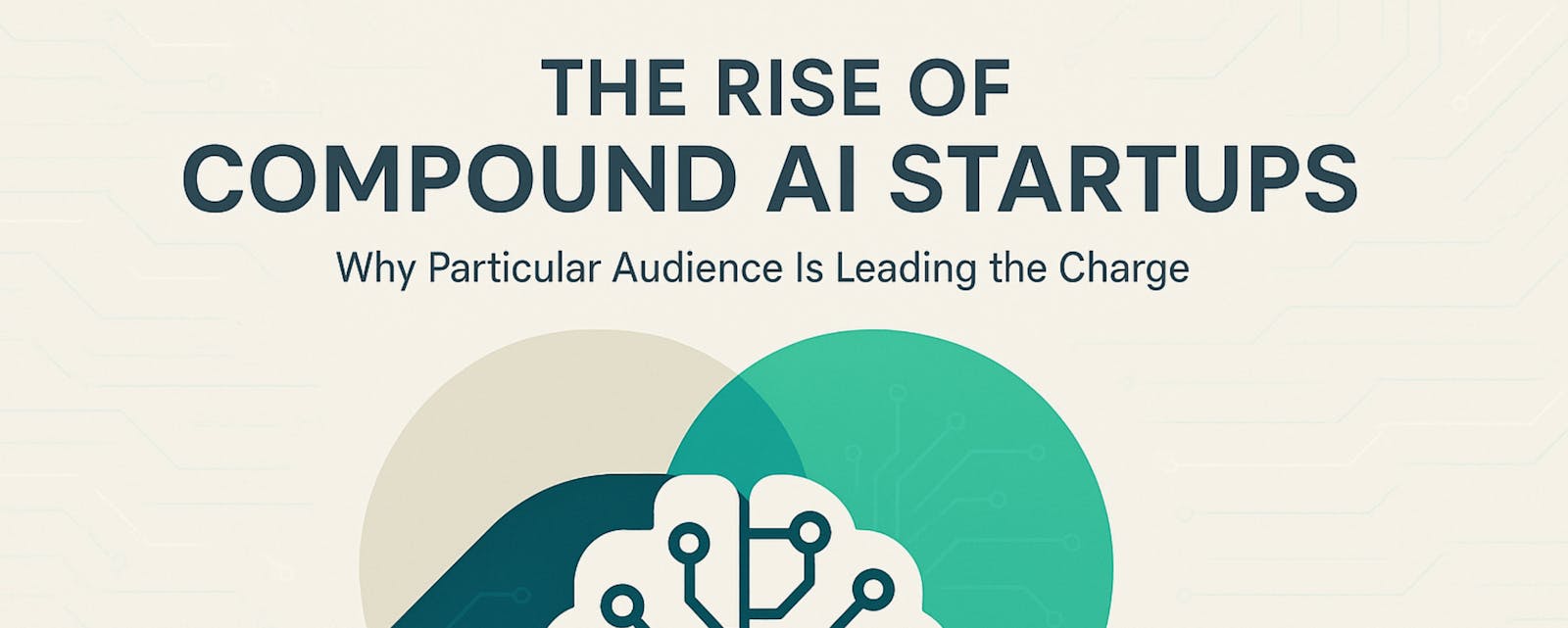What Is a Compound Startup?
A compound startup is a company that builds and launches multiple products or services which are natively integrated with each other, rather than offering a single-point solution. In other words, instead of focusing on just one narrow tool, a compound startup develops a suite of interrelated offerings that work together as one system. This approach leverages shared data, technology, and insights across the product suite, enabling the business to tap into several revenue streams and scale more rapidly (What Is a Compound Startup? | Rippling Glossary). The term was popularized by Parker Conrad (CEO of Rippling) to describe startups that “build multiple parallel ... applications that are all natively built into the same system” (What Is a Compound Startup? | Rippling Glossary). By having products designed to complement and reinforce one another, a compound startup can often deliver more value collectively than a collection of isolated point solutions, and in doing so, it can build a stronger competitive moat.
Compound Startups in the AI Context
In the era of AI, the compound startup model has gained particular relevance. AI startups today face intense competition and rapidly evolving technology. A strategy emerging for defensibility is to create an interlocking system of AI-driven products or agents that strengthen each other. As one tech leader put it, “with plummeting software development costs and a 10x increase in competition, every AI startup needs to become a compound startup... Building an interlocking (compound!) system of AI agents that work together to strengthen the offering and offer multiple related value propositions is one of the few remaining ways to build a moat” (Bowling Alley Strategy for AI Startups: Start with one strike. Knock down… | Ambika Soorappaiah). The idea is that an AI startup might start by solving one specific problem extremely well (to achieve initial product-market fit), and then quickly expand to adjacent, related problems. Each new AI product or feature uses the data and capabilities of the others, creating a chain reaction of value – much like a set of dominos or a “bowling alley” where one strike sets off others. This compound approach in AI not only diversifies the startup’s offerings but also allows the AI models or agents to complement one another, making the overall platform smarter and more robust over time. The end result is a competitive moat that is hard for single-product competitors to breach, since they would have to replicate an entire ecosystem of interwoven AI capabilities, not just one feature.
Particular Audience: A Compound AI Startup in Retail Tech
Particular Audience is a clear example of a compound startup in the AI space, operating in the retail/e-commerce technology domain. Founded with a focus on machine learning for e-commerce, Particular Audience has built an integrated suite of AI-powered products that collectively enhance online retail operations. Their mission is often described as “democratizing the technology that makes Amazon great, for the rest of online retail” (About Us) – essentially providing a bundle of AI-driven capabilities (search, personalization, bundling, pricing, and advertising) that a retail giant like Amazon leverages internally, but packaged for other retailers. This multi-pronged approach means Particular Audience is not just a single product, but rather a platform of interrelated services. All of these services share a common AI-centric foundation and data layer, branded as their DiscoveryOS (Discovery Operating System) platform, which acts as the unified engine for product discovery and monetization across the suite (Particular Audience Announces Largest Ever Product Release—Reinforcing Market Leadership in Advanced AI-Powered Retail Media, Search & Personalization) (Particular Audience Announces Largest Ever Product Release—Reinforcing Market Leadership in Advanced AI-Powered Retail Media, Search & Personalization). Below are the key products and AI systems Particular Audience offers, and how they interconnect:
- AI Search and Personalization: At its core, Particular Audience provides AI-enhanced search and recommendation engines for e-commerce sites. It applies advanced machine learning (including sentence-transformer models) to power site search and product recommendations (Particular Audience Named in The Leading 100 List, Setting a New Standard in AI-Driven Hyper-Personalization for eCommerce & Retail Media). This means that when a shopper visits a retailer’s website, the search bar and the product recommendations are driven by AI that predicts what the shopper is looking for even before they explicitly type it. The company’s Adaptive Transformer Search feature, for instance, uses transformer-based language models (similar to the tech behind ChatGPT) to interpret search queries and even eliminate “no results” dead-ends (Particular Audience Named in The Leading 100 List, Setting a New Standard in AI-Driven Hyper-Personalization for eCommerce & Retail Media). In parallel, their recommendation engine uses multimodal machine learning (analyzing browsing behavior, purchase history, product images, text, etc.) to personalize product listings for each visitor in real time (Particular Audience Named in The Leading 100 List, Setting a New Standard in AI-Driven Hyper-Personalization for eCommerce & Retail Media). Together, these search and personalization tools ensure that every customer sees a “different website” tailored to their interests (Startup Interview with James Taylor, Founder of Particular Audience (aka Similar Inc) | HackerNoon) (Startup Interview with James Taylor, Founder of Particular Audience (aka Similar Inc) | HackerNoon), greatly improving product discovery and conversion rates.
- Retail Media (Sponsored Advertising) Platform: On top of the organic search and recommendation system, Particular Audience has built an integrated retail media network platform – essentially a system for sponsored products and ads within the shopping experience. This allows retailers to turn their e-commerce site into an ad monetization engine (similar to Amazon’s sponsored product ads). Particular Audience’s retail media module lets brand suppliers pay for premium placement of their products on a retailer’s site, but it does so in an AI-driven way rather than via manual ad bidding. In fact, PA is described as “the first AI-powered retail media platform” (Particular Audience Named in The Leading 100 List, Setting a New Standard in AI-Driven Hyper-Personalization for eCommerce & Retail Media). The same AI that powers the organic recommendations is used to decide when and where to display a sponsored product for maximum relevance. By predicting purchase intent and inserting sponsored items intelligently, the platform drives much higher click-through rates than traditional keyword-based advertising (PA’s AI ads achieve ~1.1% CTR versus the 0.39% industry average) (Particular Audience Named in The Leading 100 List, Setting a New Standard in AI-Driven Hyper-Personalization for eCommerce & Retail Media) (Particular Audience Named in The Leading 100 List, Setting a New Standard in AI-Driven Hyper-Personalization for eCommerce & Retail Media). This retail media component is deeply interwoven with the search/recommendation engine – every ad shown is effectively just another highly personalized recommendation, with the AI ensuring it aligns with the shopper’s needs (Particular Audience Announces Largest Ever Product Release—Reinforcing Market Leadership in Advanced AI-Powered Retail Media, Search & Personalization). Retailers using Particular Audience can thus generate new high-margin revenue from brands without compromising the customer experience, since the sponsored content remains relevant to each user. Notably, this was an adjacent expansion on top of PA’s personalization tech; once they mastered showing the right products to the right user, layering sponsored products was a natural next step, creating a new value proposition (ad revenue) for their clients (About Us).
- Product Bundling and Merchandising: Particular Audience also offers AI-powered product bundling tools to increase basket size. This feature automatically suggests product bundles (e.g. “Frequently Bought Together” or complementary items) using advanced AI to determine which items pair well (In The News - Learn How Particular Audience Delivers Personalization For Retailers At Scale). By analyzing product metadata and past purchase combinations, the system can create dynamic bundles that adapt to current catalog and inventory changes. Retailers deploying this see significant lifts in units per transaction (PA reports up to +60% in units per order from bundles) (In The News - Learn How Particular Audience Delivers Personalization For Retailers At Scale). The bundling capability is integrated with the rest of the platform – for example, the recommendation engine might incorporate bundle suggestions into the shopping journey, and the pricing intelligence (below) can ensure bundle discounts or price beats are optimized. All of this again feeds back into the personalized experience; the more a customer shops, the more data the system has to create relevant bundle offers.
- Pricing Intelligence and Dynamic Pricing: An additional adjacent offering from Particular Audience is pricing intelligence – tools like real-time price comparison and dynamic pricing (often branded as “Price Beat” or price match features). This service monitors competitor prices and can automatically adjust or suggest adjustments to ensure the retailer always offers the best price in a MAP-compliant way (In The News - Learn How Particular Audience Delivers Personalization For Retailers At Scale). By doing so, retailers can double conversion rates on items by guaranteeing shoppers they won’t find a lower price elsewhere (In The News - Learn How Particular Audience Delivers Personalization For Retailers At Scale). This pricing module shares data with the other components: for instance, if the system detects a competitor’s lower price on a popular item, it might trigger a dynamic coupon or highlight a price match in the recommendation widget to persuade the customer to buy on the spot (In The News - Learn How Particular Audience Delivers Personalization For Retailers At Scale) (In The News - Learn How Particular Audience Delivers Personalization For Retailers At Scale). Pricing intelligence complements the search and ads as well – items that are a great deal can be promoted more, and sponsored campaign outcomes improve when prices are competitive. In short, this feature set expanded PA’s platform from just what to show a customer, to also at what price to sell it for optimal results.
All these products – personalized search, recommendations, sponsored ads, bundling, and dynamic pricing – are built to work in concert. They are offered as modules but run on a unified platform (DiscoveryOS), sharing AI models and a common data pool about products and user behavior (About Us) (About Us). This is the essence of Particular Audience’s compound strategy: each new capability they added addresses an adjacent need for retailers (discovery, conversion, or monetization), and because they designed them to interlock, each addition makes the overall system smarter and more indispensable. For example, data from the search queries and clicks informs the recommendation engine; the recommendation engine’s data can inform which sponsored product to display; the success of sponsored placements might inform inventory or bundling strategies, and so on. The CEO, James Taylor, emphasizes that PA “isn’t just another retail media platform – it’s an AI company at its core. Every ad and recommendation should be hyper-personalized in real time. That’s what we’re delivering.” (Particular Audience Announces Largest Ever Product Release—Reinforcing Market Leadership in Advanced AI-Powered Retail Media, Search & Personalization). This underscores that their competitive edge comes from the integration of these features via AI personalization everywhere (whether it’s an organic recommendation or a paid placement, the underlying AI treats it with the same level of personalization).
How the Compound Approach Strengthens Their Market Position
Particular Audience’s compound startup approach has created a powerful competitive moat and differentiation in the market. By expanding from a core offering into a network of interrelated services, PA has effectively built a “flywheel” for their clients’ e-commerce businesses (About Us). Here are a few ways this compound strategy strengthens their position:
- Holistic Solution (One-Stop Shop): In a landscape where many vendors offer point solutions (one vendor for site search, another for recommendations, another for on-site ads, etc.), Particular Audience stands out by delivering an all-in-one platform. Retailers can adopt PA to address multiple needs at once, rather than stitching together disparate tools. This one-stop approach is appealing for clients and makes PA stickier – once a retailer uses PA for search, it’s easy to turn on their recommendations or ad monetization module, and vice versa, since it’s all pre-integrated. It also simplifies implementation and lowers the barrier to adding new functionality. As a result, PA can cross-sell its products and increase the lifetime value of each client by solving more of their problems (What Is a Compound Startup? | Rippling Glossary) (What Is a Compound Startup? | Rippling Glossary). This breadth of offering is a defensible advantage against competitors who might excel in one niche area but cannot match the full suite.
- Data Network Effects: Because all of PA’s services run on a shared AI platform, they benefit from network effects in data. The more retailers and shoppers that interact with any part of the system (search, recs, ads, etc.), the more data the AI has to improve personalization across all parts. For instance, learning from millions of recommendation impressions can make the search algorithm smarter about user intent, and learning from ad click patterns can inform which products are trending and should be recommended organically. This compounding of data improves the effectiveness of the platform over time, making it harder for a new competitor with a single-feature product to catch up in terms of relevance and accuracy. Essentially, PA’s interlocking system creates a virtuous cycle: better personalization leads to more engagement and ad revenue, which provides more data and funding to improve the algorithms, leading to even better personalization. This kind of self-reinforcing loop is a classic competitive moat in AI-driven businesses.
- High Switching Costs: A compound startup often enjoys higher customer lock-in, and this is true for Particular Audience. A retailer that uses PA’s DiscoveryOS for personalized search, recommendations, and advertising would have deeply intertwined PA technology in core parts of its e-commerce stack. Replacing PA wouldn’t mean just swapping out one tool; it could involve multiple systems (search engine, recommendation engine, ad server, etc.) and risk disrupting the carefully calibrated balance between them. This integration raises the switching cost for customers, thereby protecting PA’s market position. Moreover, by addressing adjacent needs of the client rapidly after the first success, PA likely pre-empts competitors from filling those gaps. They began with personalization, then quickly provided tools for monetization (retail media) and merchandising (bundles/pricing), so a rival has fewer entry points to wedge in a competing product.
- Enhanced Client Performance and Outcomes: The compound approach directly contributes to superior outcomes for PA’s clients, which in turn strengthens PA’s reputation and market traction. For example, because PA’s solutions work in tandem, retailers have seen significant uplifts – from higher click-through and conversion rates due to AI-powered sponsored search, to larger basket sizes from automated bundles (In The News - Learn How Particular Audience Delivers Personalization For Retailers At Scale) (Particular Audience Named in The Leading 100 List, Setting a New Standard in AI-Driven Hyper-Personalization for eCommerce & Retail Media). These concrete performance boosts make a strong case for choosing PA over piecemeal solutions. It’s not just about convenience, but also about results: a manually operated retail media system might leave money on the table, whereas PA’s unified AI system can “autonomously decide the optimal placement and timing of sponsored products” to maximize efficiency (Particular Audience Named in The Leading 100 List, Setting a New Standard in AI-Driven Hyper-Personalization for eCommerce & Retail Media). Such gains help Particular Audience stand out as a leader, as evidenced by industry recognition like being named to The Lead’s Leading 100 list for retail tech innovators (Particular Audience Named in The Leading 100 List, Setting a New Standard in AI-Driven Hyper-Personalization for eCommerce & Retail Media) (Particular Audience Named in The Leading 100 List, Setting a New Standard in AI-Driven Hyper-Personalization for eCommerce & Retail Media). Each success story reinforces the perception that PA’s integrated approach is the future of e-commerce personalization and monetization.
In summary, Particular Audience exemplifies the compound startup strategy in an AI-driven context. They started with a focused solution (AI personalization for e-commerce) and strategically expanded into adjacent functionalities (search, ads, bundling, pricing) that all connect into a seamless AI platform. This interlocking system of products creates synergies that not only deliver more value to retailers (improving shopper experience and generating revenue), but also insulate PA from single-solution competitors. By building a compound startup, Particular Audience has essentially created its own competitive moat – one built on integrated AI capabilities that reinforce each other, making it a standout player in the competitive landscape of retail technology. (About Us) The company’s journey from a core offering to a broad suite of AI services highlights how a compound startup can grow and thrive: each new product addition strengthens the whole, helping them “own the whole alley” (to borrow the bowling analogy) in their domain.
Sources: The analysis above incorporates information from Particular Audience’s official website and press releases, investor materials, and industry commentary on compound startups. Key references include the Rippling glossary definition of compound startups (What Is a Compound Startup? | Rippling Glossary), insights on AI startups needing interlocking systems (Bowling Alley Strategy for AI Startups: Start with one strike. Knock down… | Ambika Soorappaiah), and details of Particular Audience’s products and strategy as described in press releases and company resources (Particular Audience — OneVentures) (Particular Audience Named in The Leading 100 List, Setting a New Standard in AI-Driven Hyper-Personalization for eCommerce & Retail Media) (Particular Audience Announces Largest Ever Product Release—Reinforcing Market Leadership in Advanced AI-Powered Retail Media, Search & Personalization), among others. All citations are provided inline for verification.



